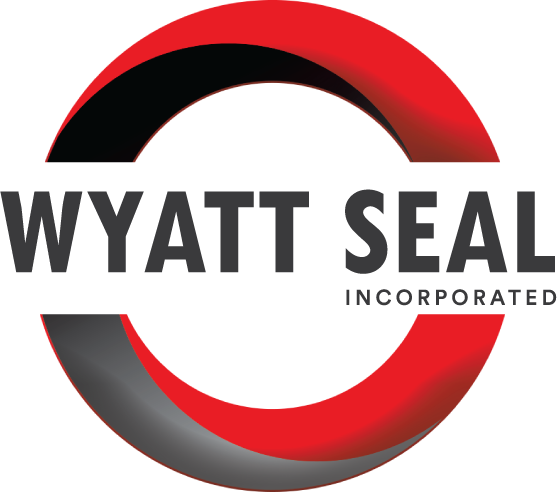.webp?width=724&height=481&name=Sealing_The_Future%20(compressed).webp)
In response to the imperative to reduce greenhouse gas emissions, Carbon Capture Utilization and Storage (CCUS) has emerged as a vital solution. CCUS technologies offer the potential to capture and store carbon dioxide (CO2) emissions from industrial sources, preventing their release into the atmosphere. Sealing products, such as DuPont™ Kalrez® O-rings, play a crucial role in every phase of CCUS, from capturing CO2 emissions in industrial settings to its compression, transportation, and utilization.
The Carbon Capture Utilization and Storage (CCUS) process consists of four main steps: capture, compression and transportation, storage, and utilization. In each of these stages, sealing products play a crucial role, ensuring the integrity and safety of the equipment, particularly in demanding conditions.
Capture
In the initial phase of Carbon Capture Utilization and Storage (CCUS), termed "capture," the primary objective is to capture carbon dioxide (CO2) emissions from industrial sources, such as power plants and factories using fossil fuels or biomass. This step is critical for mitigating greenhouse gas emissions and is achieved primarily through amine chemical absorption—a process utilizing amines in a solution that react with and absorb CO2, preventing its release into the atmosphere. Sealing products, particularly DuPont™ Kalrez® O-rings like Kalrez® Spectrum™ 6380, are indispensable during the capture phase. They ensure efficient and safe CO2 capture by providing reliable sealing in amine chemical absorption equipment.
Compression And Transportation
In the subsequent phase, known as "compression and transportation," the captured CO2 is compressed and transported to storage sites or for various applications. This involves a series of equipment, including valves, pumps, compressors, pipes, and couplings, with the goal of increasing CO2 pressure for efficient transport, sometimes reaching a supercritical phase with elevated pressure and temperature. Sealing products like Kalrez® 0090 and Kalrez® OG193, renowned for their high-pressure sealing capabilities, play a vital role. They ensure equipment integrity and safety by maintaining high-pressure sealing performance and potentially resisting rapid gas decompression. This makes them essential components in facilitating secure and efficient CO2 compression and transportation, contributing to CCUS success.
Storage
In the "storage" phase, CO2 is injected into underground geological formations, often referred to as geo-sequestration, aiming to trap and store the CO2 permanently, reducing its release into the atmosphere. Sealing products such as Kalrez® 0090 and Kalrez® OG193 are suitable for this application, ensuring the safety and efficiency of the storage process by providing reliable sealing in high-pressure environments.
Utilization
In the final "utilization" phase, captured CO2 finds various applications, including processes like urea manufacturing, enhanced oil recovery (EOR), and the production of CO2-based synthetic fuels, chemicals, and building aggregates. These applications often involve handling CO2 at high pressure and different temperatures, sometimes in combination with other chemicals. DuPont™ Kalrez® O-rings continue to play a vital role, ensuring the integrity and safety of equipment in these applications. Kalrez® O-rings offer the necessary value and performance, contributing significantly to the secure and efficient utilization of CO2 in various industrial processes, supporting CCUS goals, and advancing toward a sustainable, low-carbon future.
DuPont™ Kalrez® offerings include various materials that are each tailored to address specific aspects of the CCUS process. Kalrez® Spectrum™ 6380 is indispensable in the CO2 absorption process when amines are used to capture CO2 emissions from industrial gas streams. It exhibits significantly lower swelling compared to other materials and is ideal for sealing applications requiring amine resistance. Kalrez® OG193 and Kalrez® 0090 demonstrate remarkable compatibility with supercritical CO2, which is vital for safe transport during this phase. Lastly, Kalrez® OG193 exhibits resistance to rapid gas decompression (RGD) and is essential for high-pressure sealing applications, where the potential for rapid decompression exists. This ensures that the seals maintain their performance and prevent gas leakage, making OG193 an ideal choice for such demanding CCUS applications.
CCUS plays a crucial role in curbing CO2 emissions in the global pursuit of a cleaner, more sustainable energy future. Sealing products play a crucial role in every phase of CCUS, from capturing CO2 emissions in industrial settings to its compression, transportation, and utilization. These seals ensure equipment integrity and safety under challenging conditions, including high pressure, high temperature, and exposure to amine chemicals. DuPont™ Kalrez® O-rings, known for their resistance to rapid gas decompression and compatibility with supercritical CO2, are essential for advancing CCUS and promoting a sustainable, low-carbon future. For more information, view the product brochure from DuPont™ here.
If you need help navigating this process to find the right seal for your project, talk to a seal expert at Wyatt Seal. We’ve spent 50 years building relationships with seal manufacturers worldwide to offer you access to thousands of seals, gaskets, O-rings, and other specialty items for any application.


-min.webp?width=4933&height=3200&name=Carbon%20Capture%20Graphic%20(compressed)-min.webp)